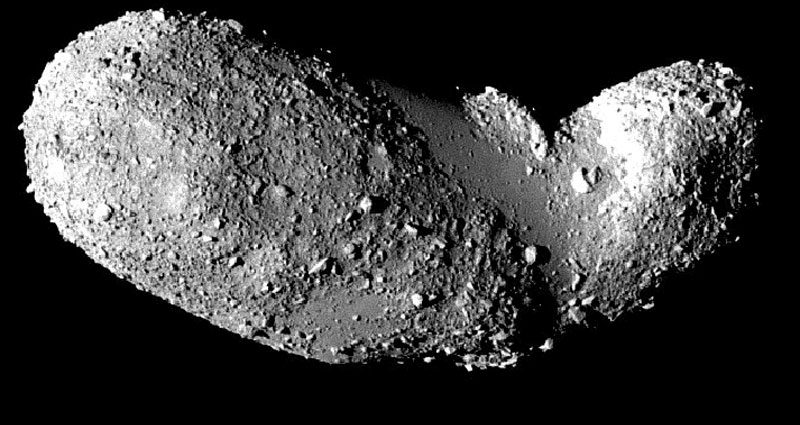
|
Explanation: Why are parts of this asteroid's surface so smooth? No one is yet sure, but it may have to do with the dynamics of an asteroid that is a loose pile of rubble rather than a solid rock. The unusual asteroid has been visited recently by the Japanese spacecraft Hayabusa that has been documenting its unusual structure and mysterious lack of craters. Recent analyses of the border regions between smooth and rugged sections of Itokawa indicate that jostling of the asteroid might be creating segregation between large and small rocks near the surface, like the Brazil nut effect. In late 2005, Hayabusa actually touched down on one of the smooth patches, dubbed the MUSES Sea, and collected soil samples that are to be returned to Earth for analysis. Hayabusa will start its three-year long return trip to Earth this month. Computer simulations show that 500-meter asteroid Itokawa may impact the Earth within the next few million years.
|
January February March April May June July August September October November December |
| |||||||||||||||||||||||||||||||||||||||||||||||||||||||
NASA Web Site Statements, Warnings, and Disclaimers
NASA Official: Jay Norris. Specific rights apply.
A service of: LHEA at NASA / GSFC
& Michigan Tech. U.
Based on Astronomy Picture
Of the Day
Publications with keywords: asteroid
Publications with words: asteroid
See also:
